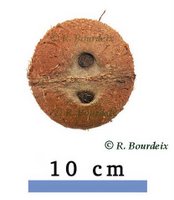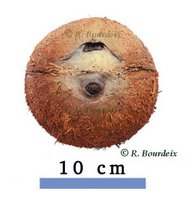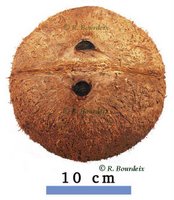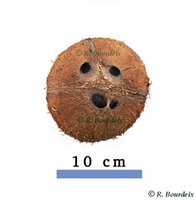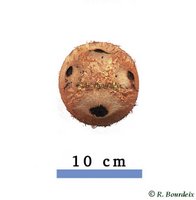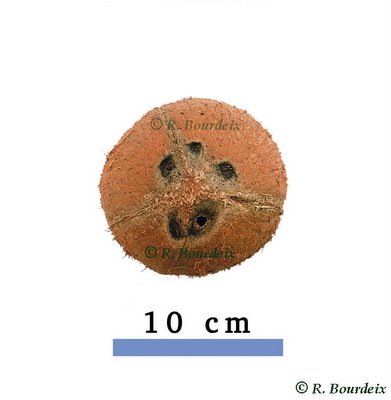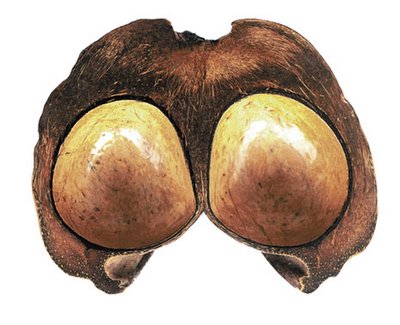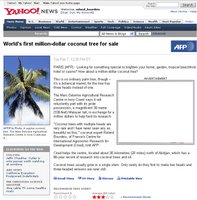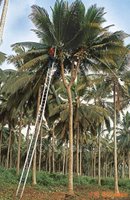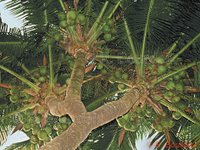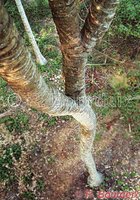By Dr R. Bourdeix, click on the pictures to enlarge them ...
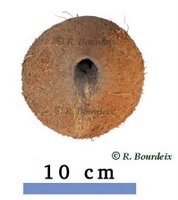
One-eyed coconuts are regarded and valued by various cultures as a bringer of good-luck and prosperity.
In 2011, this coconut was sold to an Australian collector. The main objective of this sale was not winning money, but communication. Now, it is expected that many coconut stakeholders and researchers from everywhere in the world will look carefully at their coconuts straight in the eyes to find such rarities... Hoping that many new "coconut freaks" will be discovered in the coming years.

Normal coconuts have three round indented markings or "eyes"...
This coconut have only one !
This is a real coconut found in Africa in 1999. It belonged to the private collection of Dr R. Bourdeix, in Montpellier, France, and was the unique available of its kind.
There is no coconut palm producing regularly this kind of such a strange coconuts. One eyed coconut is very rare; it occurs no more than one time within several millions of normal coconut.

